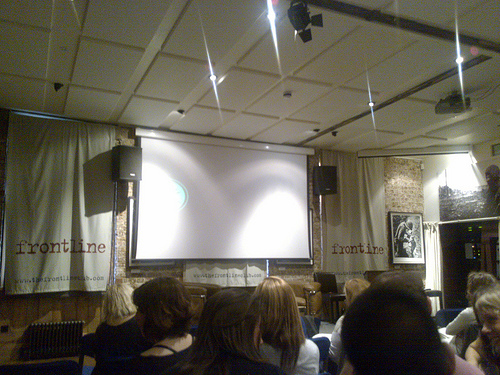By Emily Craig
Press journalists are being forced to adapt to the new media environment and now they’re almost as likely to be dispatched on a video assignment as to be penning copy at their desks.
We’ve talked previously about how UK newspapers – even local ones – are increasingly using video to attract, or at least retain, their readers. And, as the price of video equipment continues to fall sharply, it’s now far cheaper for newspapers to cut and shoot more of their own video.
But how does a press journalist become a video journalist? After all, whilst some newspapers want (and, crucially, have the money) to recruit experts from the field, many are relying on their staffers to create video pieces. At a time when editors are seeing their budgets slashed, most of these newsroom journalists are now expected to go out, get the story, write it up for the print and online editions whilst also, on top of it all, shooting and editing a video feature for the website. And they’re probably doing all of this for more or less the same pay.
But who is training these newspaper journalists to film and edit video content? Are there enough people out there with the expertise? And how is that expertise being shared?
There’s one fact that answers a lot of these questions and it is this: it’s becoming more and more difficult for journalists to get staffer jobs. And, if you’re a freelancer, you’ve got to do all you can to show you can provide content for different platforms – and that includes video. It’s surely no coincidence that all the Frontline Club’s training courses currently being advertised focus on helping journalists master video techniques and Final Cut Pro editing software.

A video screening at the Frontline Club in London (Creative Commons)
These Frontline Club courses will set you back £125/day or £650/5 days (on average). A 5 day video journalism course at the European Journalism Centre costs most than £1000 (at the time of writing). Some lucky journalists (maybe those on staff jobs) will have their costs covered, but freelancers will be funding their self-improvement out of their own pockets. The message? Adapt or die.
So at some level the industry recognises that journalists need to be (re-)trained. But, according to several high-profile journalists who work in both print and video, the training on offer is normally too limited. And this means the quality of the video journalism on most newspaper websites is, in fact, quite poor. A lot of the best stuff is, perhaps unsurprisingly, the work of American journalists (more on that at a later date).
In an article for the American Journalism Review, Charles Layton sums up the situation: “The bulk of online news video occupies a broad, gray middle ground in terms of quality, as the industry stumbles toward a goal it cannot yet quite perceive or articulate.”
However, help is at hand with the likes of findingtheframe.com. This website describes itself as “a gathering spot where multimedia journalists can receive feedback on their videos, audio slideshows and multimedia projects from industry professionals and fellow visual journalists”.
Through initiatives like this, the experts are sharing their wisdom. Perhaps it’s less a case of Darwinism in action (different species of journalists competing for survival) and more a case of journalists of all kinds collaborating. After all, in this unfamiliar and continually evolving technological landscape, no group is guaranteed survival.







